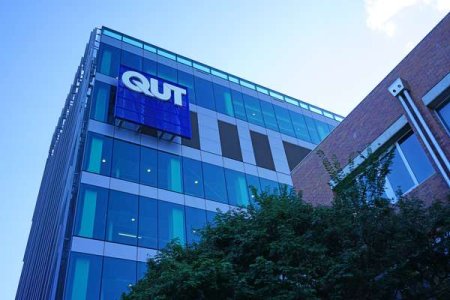Queensland unveils genetically modified banana safe for human consumption
- Replies 4
In an era defined by advancements in biotechnology, the realm of agriculture has witnessed a paradigm shift with the introduction of genetically modified fruits.
From enhancing nutritional content to strengthening resistance against pests and diseases, these genetically engineered marvels hold the promise of revolutionising food supply and addressing global challenges.
Born in the labs of Queensland, the world's first genetically modified banana, known as QCAV-4, has been given the green light for human consumption and commercial sale in Australia.
The QCAV-4 banana is the brainchild of researchers from the Queensland University of Technology (QUT).
Their mission? To protect the banana industry from the devastating effects of Panama disease tropical race 4, a soil-borne fungus that poses a significant threat to banana crops worldwide.
'QCAV-4 is a Cavendish Grand Nain banana that has been bioengineered with a single banana resistance gene, RGA2, from the wild, southeast Asian banana, Musa acuminata ssp malaccensis,' QUT explained in a statement.
'Cavendish bananas already contain the RGA2 gene, but it is dormant.'

Despite this significant breakthrough, don't expect to see the QCAV-4 banana in your local Australian supermarket anytime soon.
Although the Australian government has approved it for commercial sale, there are currently no plans to introduce it to the market.
Why, you might ask? The answer lies in the current state of the banana industry.
Panama disease is currently contained in Queensland, and there is an abundant supply of standard Cavendish bananas.
'There's really no necessity for it at the moment,' QUT Distinguished Professor James Dale, who led the team that developed QCAV-4 said.
However, the approval of the QCAV-4 banana by Food Standards Australia New Zealand (FSANZ) as suitable for human consumption is a significant milestone.
Over the next 60 days, food ministers across the country will either ratify or request a review of this decision.
Amid the excitement, questions about the safety, environmental impact, and other ethical implications of these genetically modified products cannot be disregarded.
However, genetically modified fruits introduced in the previous years received positive remarks from some, like the genetically ‘edited’ tomatoes that could be a new source of Vitamin D.

What are your thoughts on genetically modified foods? Would you be open to trying the QCAV-4 banana if it hit the shelves? Share your thoughts in the comments below.
From enhancing nutritional content to strengthening resistance against pests and diseases, these genetically engineered marvels hold the promise of revolutionising food supply and addressing global challenges.
Born in the labs of Queensland, the world's first genetically modified banana, known as QCAV-4, has been given the green light for human consumption and commercial sale in Australia.
The QCAV-4 banana is the brainchild of researchers from the Queensland University of Technology (QUT).
Their mission? To protect the banana industry from the devastating effects of Panama disease tropical race 4, a soil-borne fungus that poses a significant threat to banana crops worldwide.
'QCAV-4 is a Cavendish Grand Nain banana that has been bioengineered with a single banana resistance gene, RGA2, from the wild, southeast Asian banana, Musa acuminata ssp malaccensis,' QUT explained in a statement.
'Cavendish bananas already contain the RGA2 gene, but it is dormant.'

Researchers from the Queensland University of Technology introduced the world’s first genetically modified banana safe for human consumption. Credits: Shutterstock
Despite this significant breakthrough, don't expect to see the QCAV-4 banana in your local Australian supermarket anytime soon.
Although the Australian government has approved it for commercial sale, there are currently no plans to introduce it to the market.
Why, you might ask? The answer lies in the current state of the banana industry.
Panama disease is currently contained in Queensland, and there is an abundant supply of standard Cavendish bananas.
'There's really no necessity for it at the moment,' QUT Distinguished Professor James Dale, who led the team that developed QCAV-4 said.
However, the approval of the QCAV-4 banana by Food Standards Australia New Zealand (FSANZ) as suitable for human consumption is a significant milestone.
Over the next 60 days, food ministers across the country will either ratify or request a review of this decision.
Amid the excitement, questions about the safety, environmental impact, and other ethical implications of these genetically modified products cannot be disregarded.
However, genetically modified fruits introduced in the previous years received positive remarks from some, like the genetically ‘edited’ tomatoes that could be a new source of Vitamin D.
Key Takeaways
- The world's first genetically modified banana, developed by Queensland University of Technology, has been approved for human consumption in Australia.
- The genetically modified QCAV-4 banana has been engineered to include the RGA2 gene from a wild banana species to resist Panama disease.
- Although approved, there are no current plans to sell the QCAV-4 banana in Australian markets as the disease is contained and the supply of standard Cavendish bananas is sufficient.
- The decision by Food Standards Australia New Zealand is subject to a 60-day period for food ministers to ratify or request a review.
What are your thoughts on genetically modified foods? Would you be open to trying the QCAV-4 banana if it hit the shelves? Share your thoughts in the comments below.







